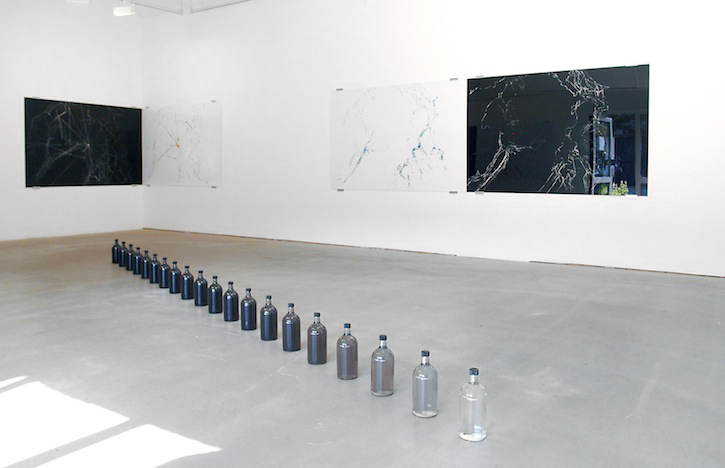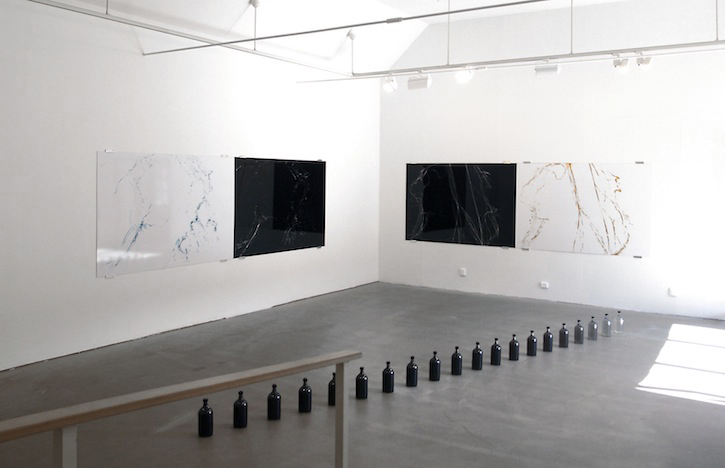|
|
 |
|
|
|
 |
|
NEW
LIGHTS |
| 4/8 - 2/9, 2012 at Tjörnedala konsthall, Sweden |
Installation
- Night black acrylic paint on diamond glass, colour photographs on aluminum, 20
glass bottles and black coloured water in a graduated scale. |
 |
| Installation view at Tjörnedala konsthall, 2012 |
| NEW LIGHTS
For many, the Arctic is an almost fictitious place, partly due to its rapidly growing attraction as a tourist destination. But also due to its natural qualities: most of the Arctic consists of deep water covered with ice. Catrin Andersson investigates the images that have been created by and continue to be created by a place tha interest her, in this case the Arctic. She adapts information to construct new descriptions where the poetic dimensions of the place – darkness, ice, emotions – are set against the harshness of science. The works in the exhibition emanate from the artist’s own experiences on the Arctic, parallel to scientific and historical documents. The four large diptychs are reminiscent of a kind of ephemeral maps, but lacking all the information one expects to finds on a map: distances, borders, names. Instead they display irregular networks of glowing lines, scratches and marks. In one half of each diptych the viewer is being mirrored in the surface that bears resemblance with still, black water. The other half consists of the inverted pattern, a colour photograph where the lines seem to gain new meanings. Some of the lines seem hesitant and as if the movement that created them stopped or turned around. Others relentlessly cut through both time and space. The diptychs show traces of human activity and transportation on the Arctic – historic and modern time polar expeditions, research, and commercial traffic. The work speaks about movement, but also makes claims on different realities. They reveal narrative as abstract, at times reduced merely to signs. The artist seems to be questioning whether it is possible for anyone to have a personal or unique experience of a historic place that has been described in such detail as the Arctic. She is describing a new experience, not yet incorporated into the visual imagery of the place: and the viewer is free to project her own story, perhaps one that has never before been told, through works.
|
 |
Installation view
at Tjörnedala konsthall, 2012 |
NEW LIGHTS
Karin
Faxén |